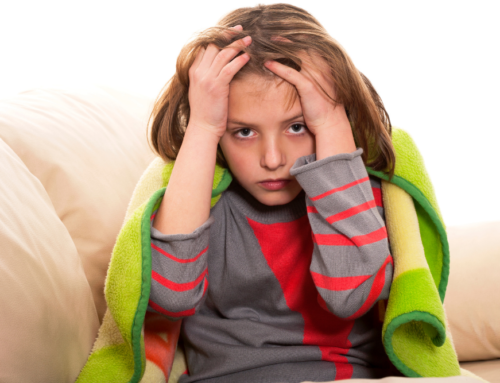Article Written by Jennifer Welton, MA, MS, LPCC
Happy New Year! The time for post-festive thinking is upon us. It’s time for reflecting and creating goals.
However, from a child development standpoint, our children have yet to master how to self-reflect on their behavior. In fact, during the previous few months, young children have experienced a massive dopamine surge. Dopamine is the brain chemical responsible for reward-motivated behavior. Throughout the holiday season children listened to the adults in their world tell them, “you better watch out, you better not cry, better be good, I’m telling you why, Santa Claus is coming to town.” These kids have held it together to get the gifts on their wish list. Now what do we have? A big dopamine let down, not one to be good for, for goodness sake. 
The reward-driven behavior paired with a vacation that consisted of more time at home getting love and attention from you, the primary caregiver, can also leave the child feeling sad as they return to school. The goal of this article is to help you prepare for the child’s post-extrinsic-motivation release. That’s the closest chain of terms I could think of to describe a child’s January meltdown(s). Now, let’s help them get through it, realizing that post-holiday blues could be affecting your mood as well. According to WebMD, some adults experience post-holiday sadness due to built-up expectations and disappointments from the previous year, coupled with stress and fatigue (WebMD, 2019). Parents and caregivers, it’s understandable that you aren’t always “on,” but even if you’re feeling “off” stay connected with your child by being authentic, keeping it real, and communicating how you are feeling with appropriate boundaries. So really you are always “on” for your child, modeling that it’s ok to fully feel your feelings.
The four steps to facing these challenges are:
- Connect with yourself by being aware of your own thoughts and feelings. It helps to realize that our feelings are not permanent.
- Your child’s feelings are temporary too. Allow time to sit with them and recognize how they’re feeling. Catch yourself if you notice that you are trying to fix it with a reassuring “it’ll be ok” or “don’t cry.” Instead, work to validate your child’s feelings. “It’s hard when _____.” Fill in the blank with your child’s struggle.
- Don’t take their upset personally. Taking it personally will cause your emotions to heighten. Instead, be their safety net.
- Find intrinsic motivation. Young children have just mustered up all their energy for extrinsic motivation, because they wanted a reward (presents) and they were working so hard to avoid punishment and not get caught doing something “naughty.” Intrinsic motivation is finding something they enjoy doing for the pure enjoyment of doing it. This can help you too, parents and caregivers, do you remember what is was like to get lost in your favorite leisure activity?
Now that you’re motivated, here are a few ideas to help your child find something that brings them joy (that doesn’t involve screen time). Take them to an arts and crafts store and browse through the aisles, maybe you will both find your next project. Go to the library, the power of reading together may spark an interest in writing or theatre. Ask your child what they would like to do that is new and unique to them. You might be surprised to find many of the activities they are interested in are available at your community recreation center. Teaching your child to discover their internal motivators will help them build a greater sense of stability and self-reliance that will prevent post-holiday meltdowns next year.
Get out there and create some fun!!



